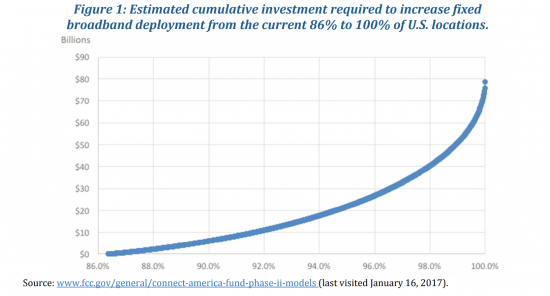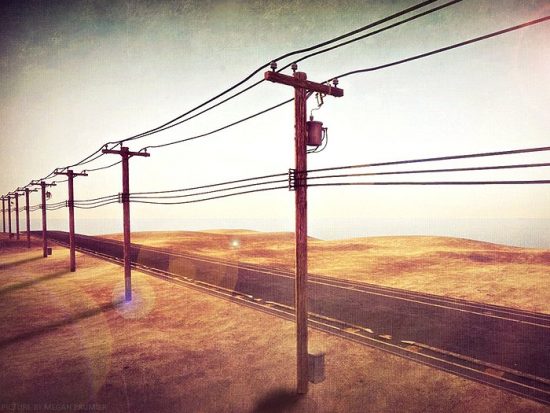I write about telecom and tech policy and have found that lawmakers and regulators are eager to learn about new technologies. That said, I find that good tech policies usually die of neglect as lawmakers and lobbyists get busy patching up or growing “legacy” policy areas, like public pensions, income taxes, Medicare, school financing, and so forth. So it was a pleasant surprise this spring to see Arizona lawmakers prioritize and pass several laws that anticipate and encourage brand-new technologies and industries.
Flying cars, autonomous vehicles, telehealth–legislating in any one of these novel legal areas is noteworthy. New laws in all of these areas, plus other tech areas, as Arizona did in 2021, is a huge achievement and an invitation to entrepreneurs and industry to build in Arizona.
Re: AVs and telehealth, Arizona was already a national leader in autonomous vehicles and Gov. Ducey in 2015 created the first (to my knowledge) statewide AV task force, something that was imitated nationwide. A new law codifies some of those executive orders and establishes safety rules for testing and commercializing AVs. Another law liberalizes and mainstreams telehealth as an alternative to in-person doctor visits.
A few highlights about new Arizona laws on legal areas I’ve followed more closely:
- Urban air mobility and passenger drones
Arizona lawmakers passed a law (HB 2485) creating an Urban Air Mobility study committee. 26 members of public and private representatives are charged with evaluating current regulations that affect and impede the urban air mobility industry and making recommendations to lawmakers. “Urban air mobility” refers to the growing aviation industry devoted to new, small aircraft designs, including eVTOL and passenger drones, for the air taxi industry. Despite the name, urban air mobility includes intra-city (say, central business district to airport) aviation as well as regional aviation between small cities.
The law is well timed. The US Air Force is giving eVTOL aircraft companies access to military airspace and facilities this year, in part to jumpstart the US commercial eVTOL industry, and NASA recently released a new study (PDF) about regional aviation and technology. NASA and the FAA last year also endorsed the idea of urban air mobility corridors and it’s part of the national strategy for new aviation.
The federal government partnering with cities and state DOTs in the next few years to study air taxis and to test the corridor concept. This Arizona study committee might be to identify possible UAM aerial corridors in the state and cargo missions for experimental UAM flights. They could also identify the regulatory and zoning obstacles to, say, constructing or retrofitting a 2-story air taxi vertiport in downtown Phoenix or Tucson.
Several states have drone advisory committees but this law makes Arizona a trailblazer nationally when it comes to urban air mobility. Very few states have made this a legislative priority: In May 2020 Oklahoma law created a task force to examine autonomous vehicle and passenger drones. Texas joined Oklahoma and Arizona on this front–this week Gov. Abbot signed a similar law creating an urban air mobility committee.
- Smart corridor and broadband infrastructure construction
Infrastructure companies nationwide are begging state and local officials to allow them to build along roadways. These “smart road” projects include installing 5G antennas, fiber optics, lidar, GPS nodes, and other technologies for broadband or for connected and autonomous vehicles. To respond to that trend, Arizona passed a law (HB 2596) on May 10 that allows the state DOT–solely or via public-private partnership–to construct and lease out roadside passive infrastructure.
In particular, the new law allows the state DOT to construct, manage, and lease out passive “telecommunication facilities”–not simply conduit, which was allowed under existing law. “Telecommunication facilities” is defined broadly:
Any cable, line, fiber, wire, conduit, innerduct, access manhole, handhole, tower, hut, pedestal, pole, box, transmitting equipment, receiving equipment or power equipment or any other equipment, system or device that is used to transmit, receive, produce or distribute by wireless, wireline, electronic or optical signal for communication purposes.
The new Section 28-7383 also allows the state to enter into an agreement with a public or private entity “for the purpose of using, managing or operating” these state-owned assets. Access to all infrastructure must be non-exclusive, in order to promote competition between telecom and smart city providers. Access to the rights-of-way and infrastructure must also be non-discriminatory, which prevents a public-private partner from favoring its affiliated or favored providers.
Leasing revenues from private companies using the roadside infrastructure are deposited into a new Smart Corridor Trust Fund, which is used to expand the smart corridor network infrastructure. The project also means it’s easier for multiple providers to access the rights-of-way and roadside infrastructure, making it easier to deploy 5G antennas and extend fiber backhaul and Internet connectivity to rural areas.
It’s the most ambitious smart corridor and telecom infrastructure deployment program I’ve seen. There have been some smaller projects involving the competitive leasing of roadside conduit and poles, like in Lincoln, Nebraska and a proposal in Michigan, but I don’t know of any state encouraging this statewide.
For more about this topic of public-private partnerships and open-access smart corridors, you can read my law review article with Prof. Korok Ray: Smart Cities, Dumb Infrastructure.
- Legal protections for residents to install broadband infrastructure on their property
Finally, in May, Gov. Ducey signed a law (HB 2711) sponsored by Rep. Nutt that protects that resembles and supplements the FCC’s “over-the-air-reception-device” rules that protect homeowner installations of wireless broadband antennas. Many renters and landowners–especially in rural areas where wireless home Internet makes more sense–want to install wireless broadband antennas on their property, and this Arizona law protects them from local zoning and permitting regulations that would “unreasonably” delay or raise the cost of installation of antennas. (This is sometimes called the “pizza box rule”–the antenna is protected if it’s smaller than 1 meter diameter.) Without this state law and the FCC rules, towns and counties could and would prohibit antennas or fine residents and broadband companies for installing small broadband and TV antennas on the grounds that the antennas are an unpermitted accessory structure or zoning violation.
The FCC’s new 2021 rules are broader and protect certain types of outdoor 5G and WiFi antennas that serve multiple households. The Arizona law doesn’t extend to these “one-to-many” antennas but its protections supplement those FCC rules and clearer than FCC rules, which can directly regulate antennas but not town and city officials. Between the FCC rules and the Arizona law, Arizona households and renters have new, substantial freedom to install 5G and other wireless antennas on their rooftops, balconies, and yard poles. In rural areas especially this will help get infrastructure and small broadband antennas installed quickly on private property.
Too often, policy debates by state lawmakers and agencies are dominated by incremental reforms of longstanding issues and established industries. Very few states plant the seeds–via policy and law–for promotion of new industries. Passenger drones, smart corridors, autonomous vehicles, and drone delivery are maturing as technologies. Preparing for those industries signals to companies and their investors that innovation, legal clarity, and investment is a priority for the state. Hopefully other states will take Arizona’s lead and look to encouraging the industries and services of the future.



 The Technology Liberation Front is the tech policy blog dedicated to keeping politicians' hands off the 'net and everything else related to technology.
The Technology Liberation Front is the tech policy blog dedicated to keeping politicians' hands off the 'net and everything else related to technology.